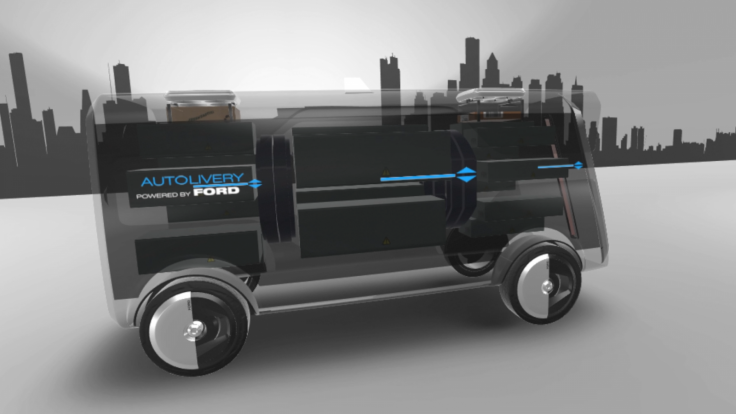
Ford has announced plans to combine drones and autonomous vehicles for deliveries.
The concept is part of the company’s ‘City of Tomorrow’ scheme, designed to improve the efficiency of living through the application of modern technology, particularly in urban areas.
This new plan for ‘Autolivery’, as Ford is calling it, would utilise both drones and electric autonomous vehicles to create a delivery service for anything from groceries to medical supplies. The drones would be used towards the final leg of the journey, particularly if there was little parking space or the area was remote and difficult to reach.

“Ford has at its heart a culture of disruption and innovation designed to come up with solutions that put people first, to save them time, money and aggravation, and also to make our cities easier to navigate and better to live in,” said Ken Washington, vice president, Research and Advanced Engineering, Ford Motor Company.
At MWC a VR demo showed the potential benefits of the Auotlivery, in which a dinner party was being prepped but lacked a crucial ingredient that could be quickly delivered via this service.
“While the scene shown today is not yet possible, ‘Autolivery’ suggests how our on-going mobility research could enrich our lives in a more sustainable ‘City of Tomorrow’,” said Washington.
A new study from Inrix has shown that city drivers in Europe could have spent up to 91 hours sitting in congestion during 2016, costing nearly £30 billion.
Euishik Bang, Ford designer, said: “It’s all about making life in the city easier. The possibility of harnessing autonomous and electric vehicle technology with drones to quickly and easily send and deliver parcels could help to make life better for everyone.”
The scheme paid particular close attention to what’s known as ‘the last 15 metres’ of the delivery process, which refers to the distance from kerb to door. This is widely viewed as the hardest part of the delivery process to automate.
“We are challenging ourselves to understand how people live, work and move in urban areas, to inform our research in mobility technologies and solutions,” Washington said.
Ford intends to have a fully autonomous commercial fleet for deliveries and ride sharing available by 2021.






